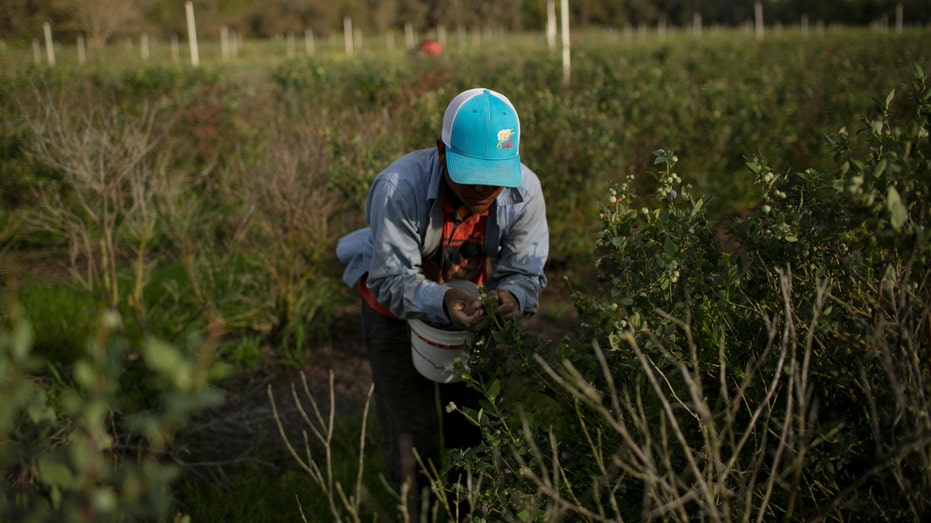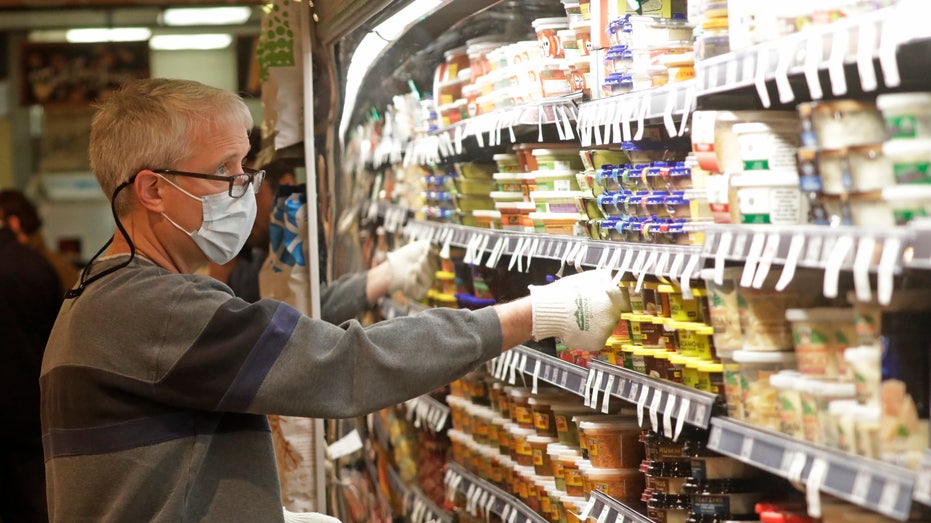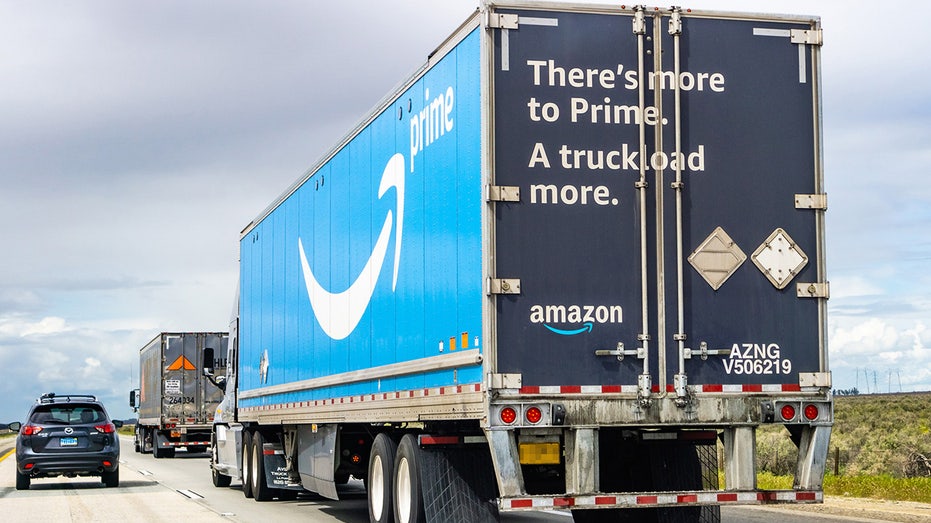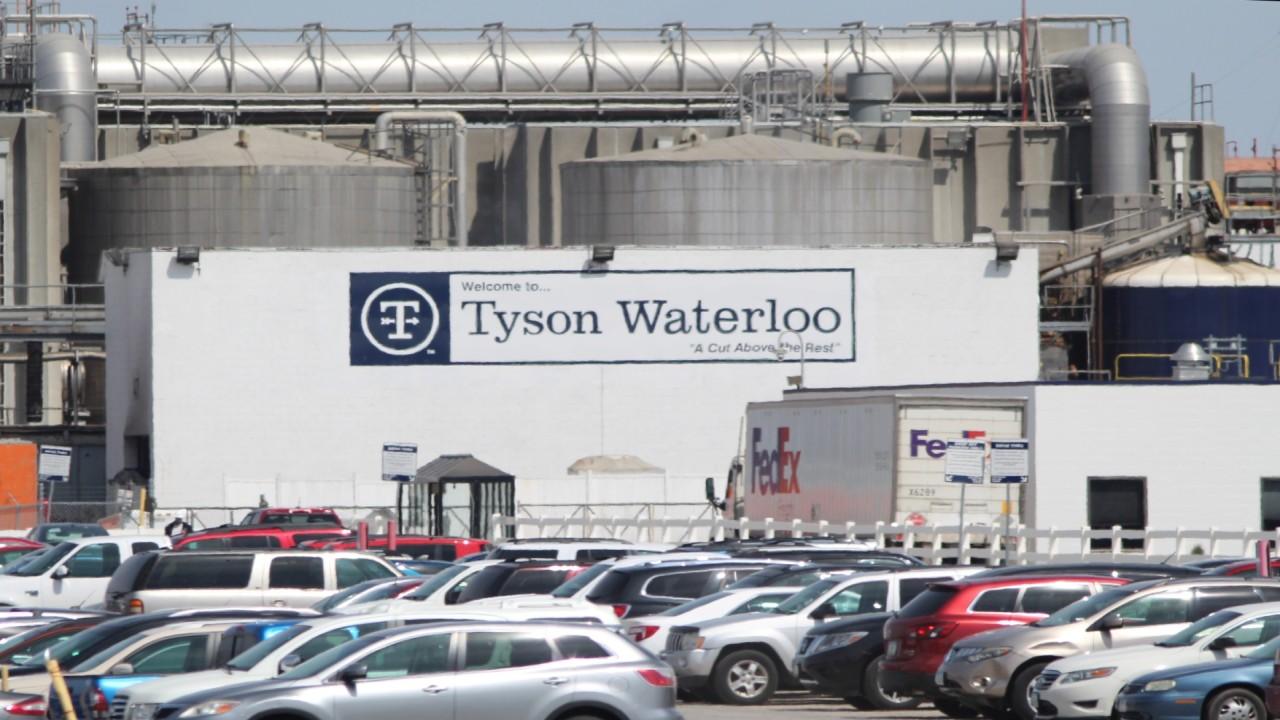Top threats to US food supply chain
Empty store shelves and clusters of COVID-19 outbreaks at meat-packing plants have led to questions about the country's food supply
Get all the latest news on coronavirus and more delivered daily to your inbox. Sign up here.
While widespread food shortages have not been an issue during the coronavirus pandemic, U.S. food supply chains face a number of threats from COVID-19.
Empty grocery store shelves and clusters of COVID-19 outbreaks in Colorado and the Midwest have led to questions about how long the country's food supply can withstand the tests of a global health crisis.
RESTAURANTS TRANSFORMED INTO FOOD BANKS
Here are four threats facing the U.S. food supply right now, according to The Hill:
1. Virus outbreaks at food plants
All eyes are on meat processing facilities, including the indefinitely closed Smithfield Foods pork plant in Sioux Falls, South Dakota, where more than 700 workers have tested positive for COVID-19 as of Monday.

On Friday, April 17, 2020, more than a dozen Iowa elected officials asked Tyson to close the pork processing plant because of the spread of the coronavirus among its workforce of nearly 3,000 people. (Jeff Reinitz/The Courier via AP)
Meat processing plants in Minnesota, Iowa, Colorado, Wisconsin and Missouri have seen COVID-19 illnesses at their facilities.
Companies say they're taking proper precautions to keep workers safe but have to keep operating because of their essential role in the food supply chain.
AMERICANS GROWING THEIR OWN FOOD DURING CORONAVIRUS PANDEMIC
"The impacts on our supply chain really can't be measured. ... It is a pretty tremendous impact, when our plants are closed," Tyson Foods President Dean Banks told "Mornings with Maria" on Tuesday.
A third Tyson warehouse worker, 64-year-old Raymundo Corral, died Saturday from COVID-19 in Sioux Falls, according to the Sioux City Journal.
2. Reliance on foreign/guest workers
Some experts were worried that President Trump's recently announced immigration suspension could negatively impact the agriculture industry if the policy included guest workers. But the administration excluded guest workers for that reason.
Nearly 250,000 guest workers were employed in U.S. agriculture last year, according to The Hill.
Despite being excluded from the temporary immigration ban, guest workers are still experiencing visa processing delays, which could make the hiring process more difficult.

A Mexican migrant worker picks blueberries during a harvest at a farm in Lake Wales, Florida, U.S., March 31, 2020. Picture taken March 31, 2020. REUTERS/Marco Bello
Trump has also reportedly considered policies that would cut pay for guest workers, which could weaken the incentive for workers to come to the U.S. during a pandemic.
Many farms are enforcing social distancing regulations to prevent the spread of potential COVID-19 cases, though most field workers are usually separated, anyway.
3. Unusual buyer patterns
With families staying home as communities enact stay-at-home policies, eating and shopping patterns, have changed during the pandemic.
Certain foods are harder to come by than others; green olives may be well-stocked while basics like meat and flour are lower in supply due to high demand at many grocery store locations.
Food insecurity due to job and income losses has also changed buyer patterns. Nearly 22 million Americans filed for new unemployment benefits in the four weeks ending April 11.
Even as some foods experiencing high demand, other perishable items are going to waste. Nearly $5 billion worth of fresh fruit and vegetables have gone to waste amid the outbreak, and some dairy producers have been draining thousands of gallons of milk, the Produce Marketing Association told The Hill.

Alan Stotts wears a mask as he shops for groceries at Harmons grocery store Friday, April 3, 2020, in Salt Lake City. (AP Photo/Rick Bowmer)
The reasoning behind this trend is the fact that grocery stores haven't changed the way they stock their shelves even though buyer patterns have shifted, The Hill reported.
USDA WANTS DIRECT CORONAVIRUS PAYMENTS TO FARMERS: PERDUE
Parents aren't packing lunches and adults aren't eating out or ordering delivery as much as usual, leaving stores and restaurants to try to adapt to changing needs.

People queue to pick up fresh food at a Los Angeles Regional Food Bank giveaway of 2,000 boxes of groceries, as the spread of the coronavirus disease continues, in Los Angeles, April 9, 2020. REUTERS/Lucy Nicholson
CORONAVIRUS FOOD SHORTAGES NOT HAPPENING, AGRICULTURE SEC. SONNY PERDUE SAYS
4. Delivery issues and high demand
Physically getting food delivered to people's homes has also been a growing issue as delivery demand grows with people hoping to avoid grocery shopping.
Delivery issues can also be correlated to people opting to shop in stores, many of which are enforcing social distancing guidelines like making people wear face masks wait in lines outside while maintaining six feet of separation when store traffic is heavy.

Amazon truck driving on the interstate, the large Prime logo printed on the side / iStock
This heavy traffic combined with strict shopping rules have taken a toll on store supplies and overwhelmed workers, which has a more indirect but still significant effect on the U.S. food supply, according to The Hill.
GET FOX BUSINESS ON THE GO BY CLICKING HERE
"What I want to make sure that we do is keep our essential workers that are part of the food supply safe, so they can continue working in agriculture, in packing houses, in grocery stores," Don Schaffner, food science specialist at Rutgers University, told The Hill.
"That's one of the things that are helping us hold it all together," he added.




















